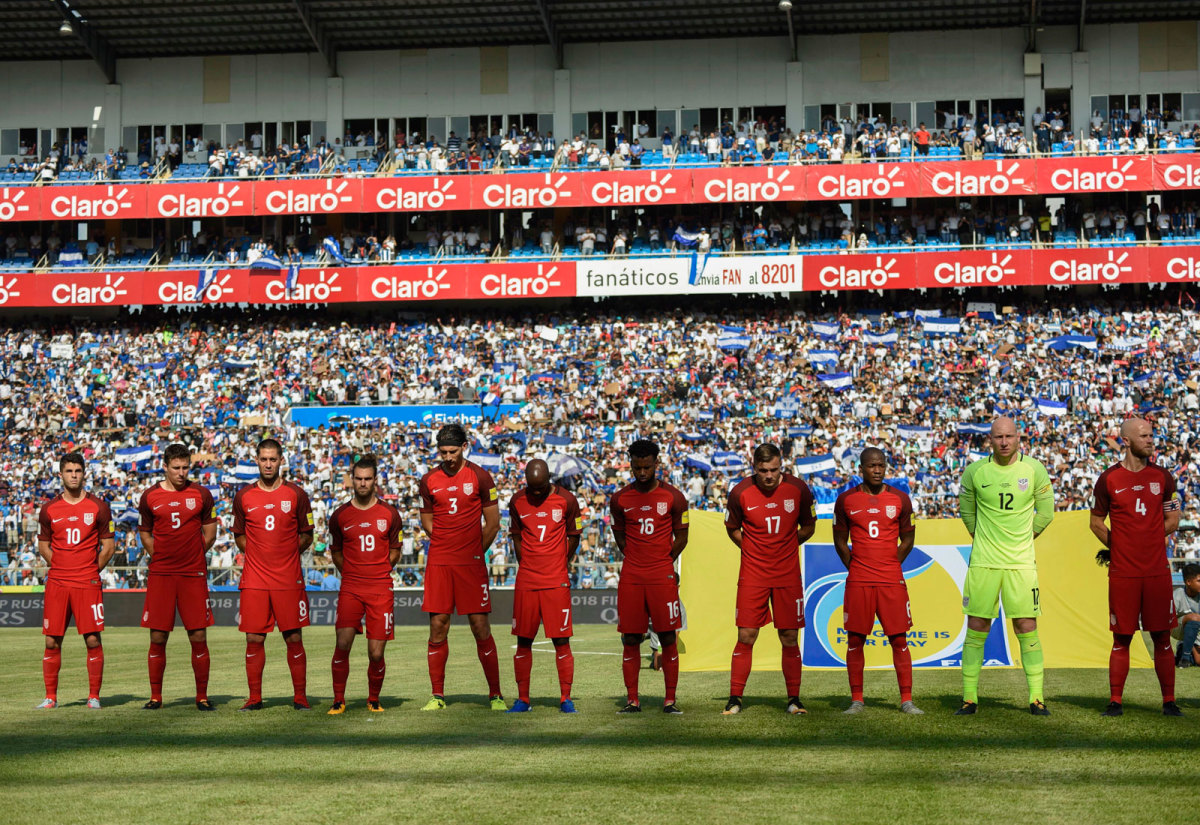USA Equipped to Handle a Missed World Cup, But Ramifications Would Still Be Seismic

ORLANDO, Fla. — The last time the United States failed to qualify for a World Cup, men’s or women’s, I wasn’t even paying attention. You probably weren’t, either. The day of infamy was May 31, 1985. I was 11 years old. The U.S. men lost 1-0 to Costa Rica on a crappy field at El Camino Community College in Torrance, Calif., eliminating the Americans from the 1986 World Cup in Mexico.
I called Paul Caligiuri, who played in that game as a 21-year-old. Caligiuri is best known today for playing in two World Cups and scoring the 1989 goal that sent the U.S. to its first World Cup in 40 years. But four years earlier, all he could do after that fateful elimination game was look around the locker room at veterans like Rick Davis, Arnie Mausser and Perry Van Der Beck and realize their World Cup dreams were done.
That World Cup debacle came at a nadir for soccer in the United States. The North American Soccer League had staged its final game the previous October. Several of the U.S. players were playing indoor soccer—almost a completely different sport.
“We’re at a low point of soccer,” Caligiuri recalls of May 31, 1985. “The federation is broke. There’s no pro [outdoor] league. I was still in college, so I had a place to go back to. But I was looking at players where this was their last chance, and they had more tears than I did. It was heartbreaking that we were eliminated.”
Once a Focus of USMNT Position Debate, Landon Donovan Assesses Christian Pulisic's Best Role
The emotions of missing a World Cup were just as acute for the players in 1985 as they would be if the U.S. were to be eliminated this week from qualifying for World Cup 2018—a real possibility if the U.S. were to perform poorly again in qualifiers on Friday here against Panama and on Tuesday at Trinidad and Tobago.
Yet soccer in America is in a completely different place today than it was 32 years ago. Much of that is due to the U.S. having qualified for every men’s and women’s World Cup starting in 1990, one of just three countries in the world to have done so. (Brazil and Germany are the others.) The U.S. men have advanced from the group stage in three of the past four World Cups, one of just eight nations to have accomplished that feat. (The rest: Argentina, Brazil, England, Germany, Mexico, the Netherlands and Spain.) And, of course, the U.S. women have won three World Cups.
From a league perspective, outdoor soccer is growing steadily in the U.S.—Major League Soccer has been around for 21 years and has grown from 10 teams in 2004 to 23 teams next season. Women’s soccer is on its third league after two failures, but the National Women’s Soccer League is about to finish its fifth season and has shown more stability than its two predecessors. Millions of dollars are being invested at the federation and club levels to develop players.
Tim Howard Confronts GK Platoon, Critics But Keeps Perspective on World Cup Qualifying
What would it mean if the U.S. missed next summer’s World Cup? It wouldn’t cripple the sport in America, but let’s just say it would be a giant missed opportunity. Nothing does more to create large numbers of new soccer fans in the U.S. than World Cups. My own case is a pretty representative one. The first outdoor soccer games I ever watched on television were in the 1990 World Cup. I was 16 and wanted to see the U.S. compete in its first World Cup in 40 years, and I ended up watching nearly every game on Univision—thank you, Andrés Cantor and Norberto Longo!—and falling down the soccer rabbit hole.
I was hooked from that point on. As a college student in 1994, I stood in packed Boston bars to see the U.S. upset Colombia and advance to the round of 16. Millions of Americans could tell similar stories from watching the U.S. win the 1999 women’s World Cup or Landon Donovan’s last-minute goal against Algeria at World Cup 2010. Sometimes I have to remind myself that the majority of current USMNT fans weren’t even following the team in 2002 during its soul-stirring run to the quarterfinals. A lot of them, in fact, know very little about it.

Due to World Cups and demographic changes, soccer matters here in a way that it never has before. According to Scarborough USA research, the soccer fanbase among U.S. adults grew by 34% from 2010 (59 million) to 2016 (79 million). And according to a recent Simmons Research Teen Study of Americans aged 12 to 17, 78% consider themselves soccer fans, compared to 59% for the NFL, 44% for the NBA and NCAA football, 42% for MLB, 38% for NCAA basketball, 28% for the NHL and 21% for NASCAR.
From a TV perspective, as you would expect, having the U.S. in the World Cup matters immensely for U.S. television. According to the database kept by Jonathan Tannenwald of the Philadelphia Inquirer and Daily News, 11 of the 20 biggest U.S. television audiences for soccer games have come for World Cup matches involving the United States. Per Nielsen, 120 million different people in the U.S. watched World Cup 2014. That’s a giant number that could be hindered from growing if the U.S. doesn’t make it.
Inside Fox Sports Coverage Plan for the 2018 FIFA World Cup in Russia
For Fox Sports, which paid more than $400 million for the U.S. English-language rights to men’s World Cups 2018 and ’22 (as well as the other FIFA tournaments during those cycles), not having the U.S. involved would be a significant blow. Media reports that Fox would lose $200 million if the U.S. misses out are inaccurate, but Fox Sports president Eric Shanks knows perfectly well that after striking gold with the broadcasts of the U.S.’s women’s World Cup triumph in 2015, Fox could do much the same with a good run by the U.S. during the network’s first men’s World Cup broadcasts.
“The World Cup is still the greatest sporting event on earth,” Shanks says, “but clearly for us it’s a different tournament if the U.S. isn’t in it.” (Full disclosure: I work for Fox Sports TV.)

Soccer has grown too much in the U.S. for that growth to be wiped out by a U.S. World Cup washout. Compared to 2016, MLS metrics are increasing in average attendance, TV viewership, social media engagement and merchandise sales. Average attendance in 2017 should finish near 22,000 per game, which is higher than France’s Ligue 1 and close to Italy’s Serie A. Meanwhile, the U.S. is the heavy favorite to co-host the 2026 World Cup with Mexico and Canada.
There’s a lot to be optimistic about, in other words. But World Cups don’t come around very often, and the opportunity cost of failing to reach Russia 2018 would be a large one.
“It’s very important [to make the World Cup],” U.S. coach Bruce Arena said on Thursday. “We continue to grow the game in this country. I think the game in the United States is at its highest point in its history with a growing domestic league, a very competitive national team and a region that continues to grow as well. It’s important that we continue to qualify for World Cups.”
A big step toward that goal comes on Friday night.
